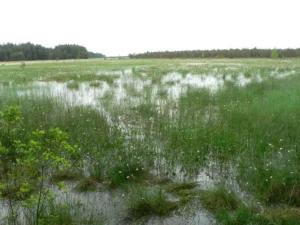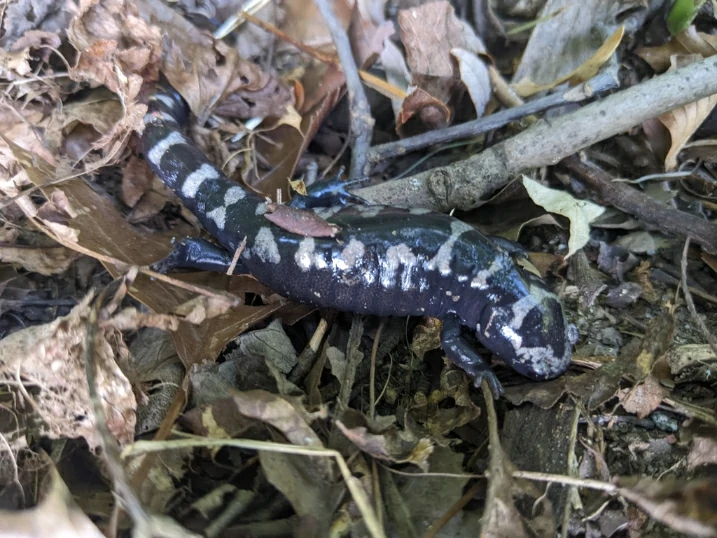Salamanders are fascinating amphibians known for their secretive habits and moist skin. Many people ask, “Where do salamanders live?” The answer is surprising because salamanders live in many kinds of habitats. These places all meet their special needs for moisture, temperature, and shelter.
Salamanders mainly live in moist places such as forests, wetlands, streams, and ponds where they can keep their skin wet and find shelter.
This article looks at the different habitats salamanders use, how their environment shapes their lives, and what makes some places perfect for their survival.
Salamanders Need Moisture to Survive
One of the most important things that decide where salamanders live is moisture. Their skin is soft and lets water and air pass through. This means salamanders must stay in damp places to breathe and avoid drying out.

Unlike reptiles with hard, scaly skin, salamanders lose water easily. So, they usually stay in places with high humidity or near water.
Because of this, salamanders mostly live in regions where the air is moist and it rains often.
Forests Provide Ideal Salamander Habitats
Many salamanders live in forests. Forests give shade, cooler air, and plenty of fallen leaves. These leaves hold moisture and give salamanders a wet place to hide during the day.
Deciduous forests, where trees lose their leaves each year, are common homes for salamanders in North America. Thick layers of leaf litter help keep the ground moist.
Coniferous forests with pine trees also offer shade and cooler temperatures, but they are usually less damp than deciduous forests.
Tropical rainforests in warm areas support many salamander species that need constant moisture and lots of water.
Logs, rocks, and moss in forests give salamanders places to hide and lay eggs.
Wetlands and Riparian Zones
Wetlands like swamps, marshes, and the edges of rivers and streams are very important for salamanders. These places have plenty of water and are good for breeding and raising young.

Salamanders that spend much of their life in or near water often live in these wet areas.
- Ponds and small lakes provide homes for salamanders during their larval (young) stages.
- Streams and creeks have cool, clean water that some species, such as the hellbender, prefer.
- Marshy fields offer shelter and lots of insects and other small animals for salamanders to eat.
These wet habitats are key for salamanders to survive and reproduce.
Some Salamanders Live Mostly in Water
While many salamanders live partly on land and partly in water, some species stay mostly underwater.
For example, mudpuppies and hellbenders spend most of their lives in clean rivers, streams, or lakes where they can hide under rocks.

These aquatic salamanders often have special features like gills outside their bodies to help them breathe underwater and webbed feet for swimming.
Terrestrial Salamanders Live Away From Water
Many salamanders, especially in cooler climates, live mostly on land as adults.
They hide in moist soil, leaf litter, or under logs and rocks but still need to be close to water to breed.
These salamanders may travel away from water during warmer months but return when it is time to lay eggs.
They can be found on forest floors, grassy areas near streams, and even in gardens or parks that offer enough shelter.
Salamanders Also Inhabit Caves and Rocky Areas
Some salamanders have adapted to live in caves, underground tunnels, or rocky cracks where it stays cool and damp.
These places provide steady temperatures and humidity that salamanders need.
Cave-dwelling salamanders often look pale and some have poor eyesight or are blind because they live in the dark.
Salamanders Are Found on Most Continents
Salamanders live in many parts of the Northern Hemisphere, including North and Central America, Europe, and parts of Asia.
They are especially common in North America, which has the greatest number of salamander species.
Salamanders are generally not found in Africa, Australia, or most of South America.
How Climate and Geography Affect Salamander Distribution
Climate plays a big role in where salamanders can live.
They usually avoid places that are too cold or too dry because they need moisture.
Mountains, valleys, and rivers create many small habitats that salamanders can use.
For example, some salamanders live in cool mountain forests, while others prefer low wetlands.
Human Impact on Salamander Habitats
Human activities like building cities, cutting down forests, pollution, and climate change have harmed salamander homes.
Losing forests and wetlands means fewer places for salamanders to hide and breed.
Polluted water can hurt salamanders and their young.
Conservation efforts work to protect and restore these habitats to help salamanders survive.
How You Can Help Protect Salamanders’ Homes
You can help salamanders by:
- Saving natural forests, wetlands, and streams near you
- Avoiding chemicals or pesticides near salamander areas
- Joining local conservation programs
- Leaving logs and leaf litter undisturbed in gardens and parks
These simple steps keep the moist, safe places salamanders need.
Conclusion
Where do salamanders live? They are found mostly in moist places like forests, wetlands, streams, ponds, caves, and sometimes even city parks.
Their soft skin and need for water make these habitats essential for their survival and reproduction.
Knowing about their homes helps us understand salamanders better and shows why it’s important to protect these special places.
Hi, my name is Ezra Mushala, i have been interested animals all my life. I am the main author and editor here at snakeinformer.com.

